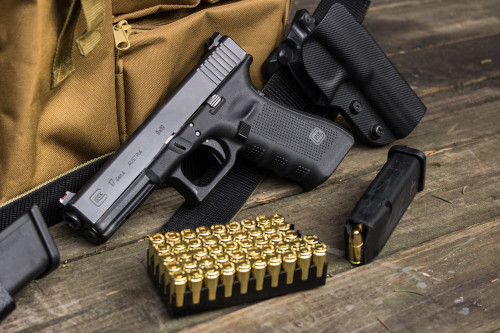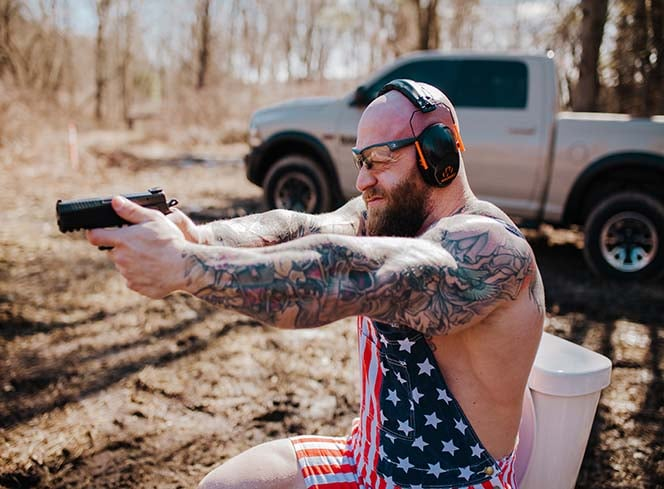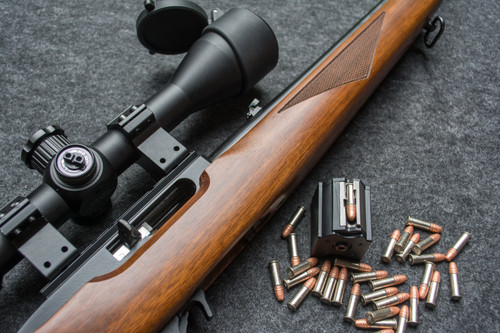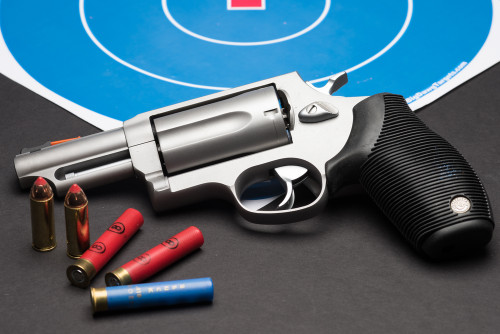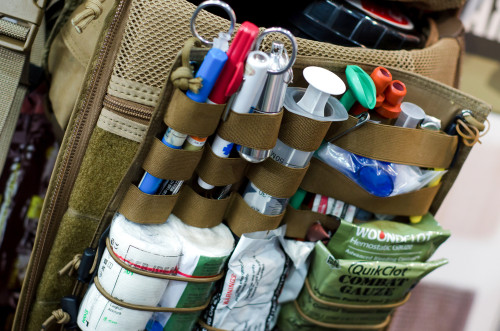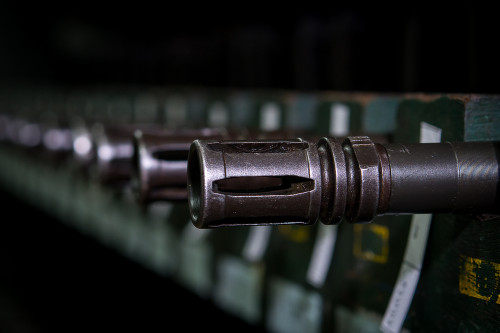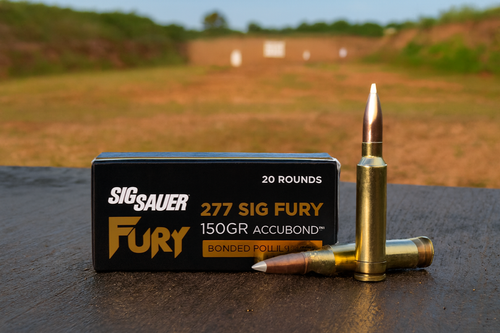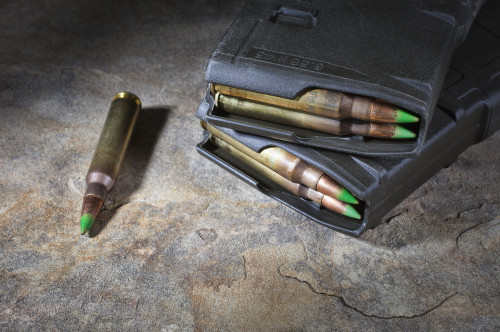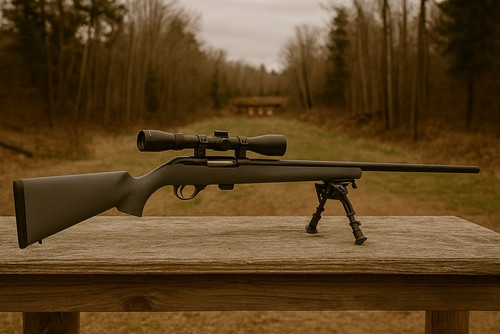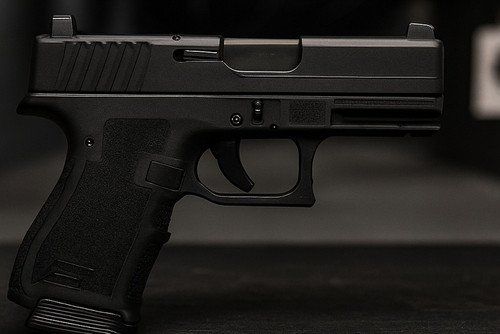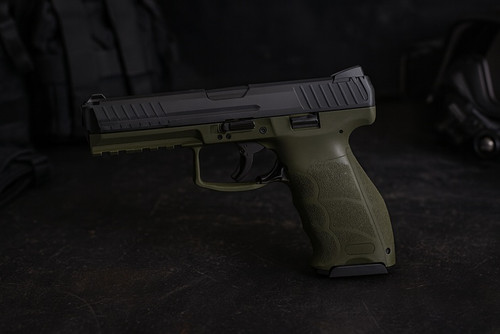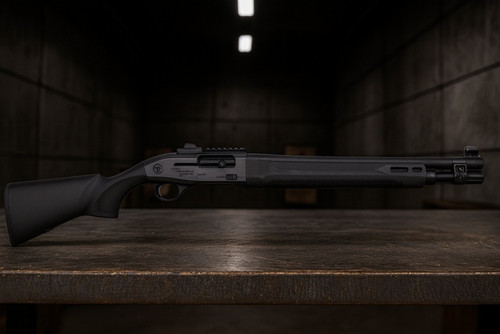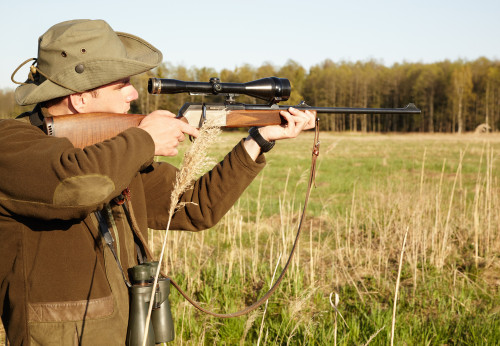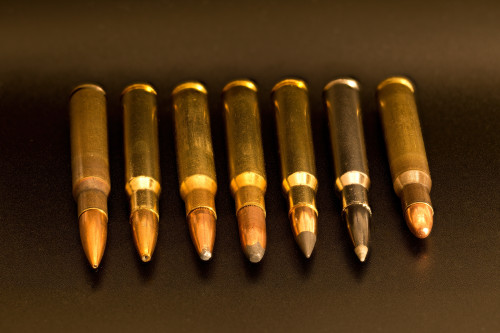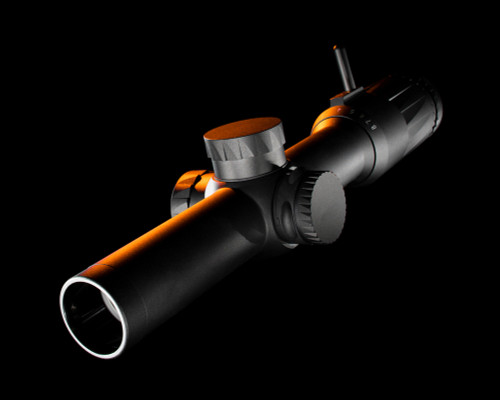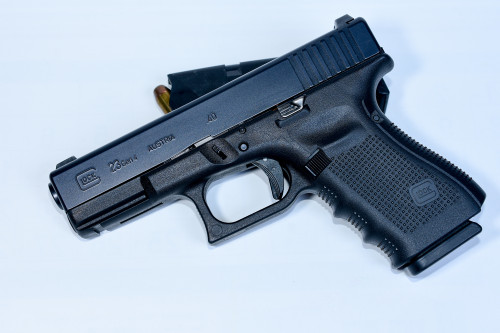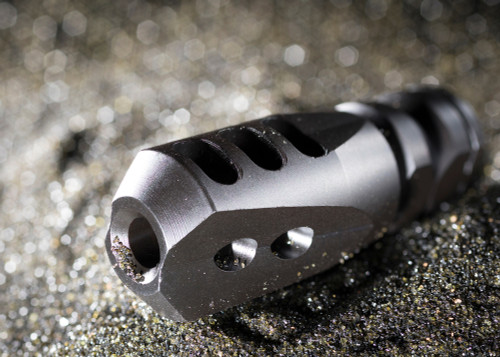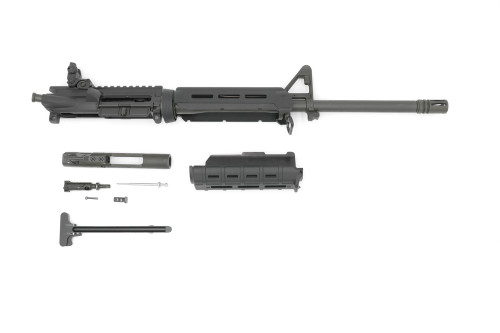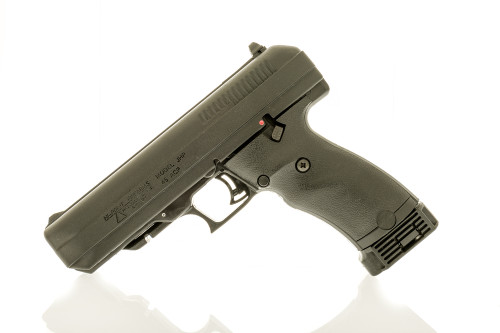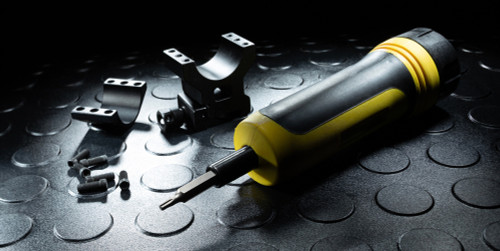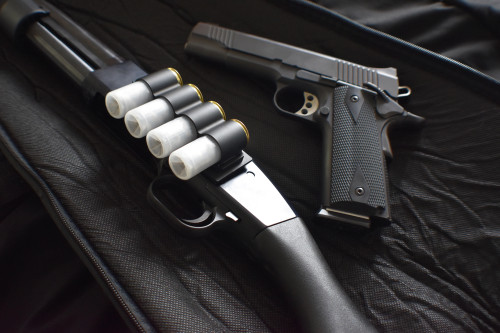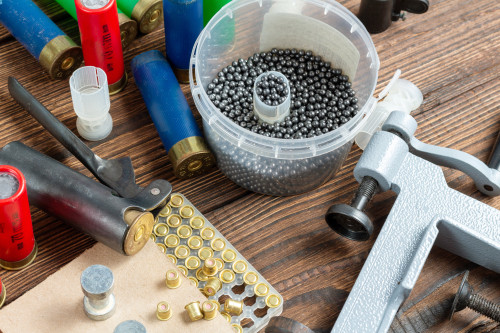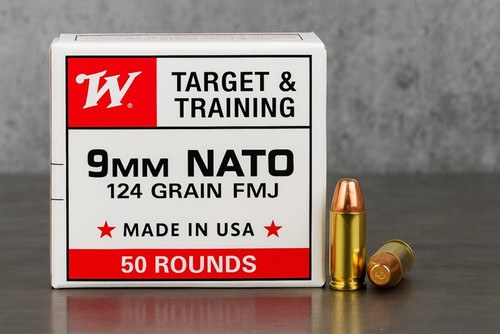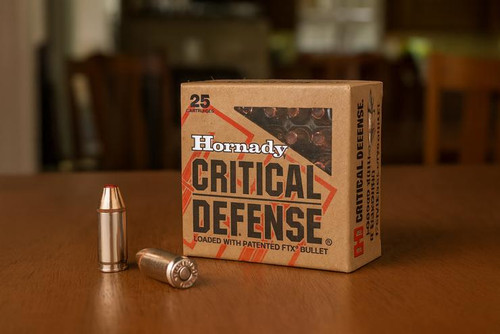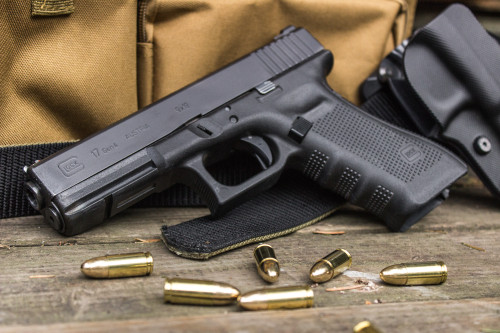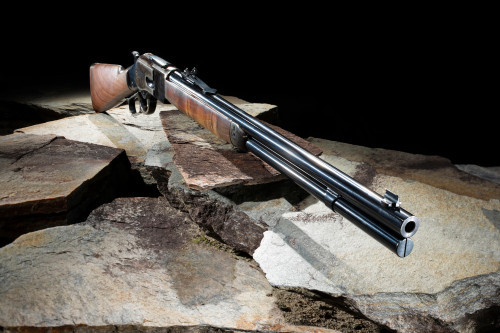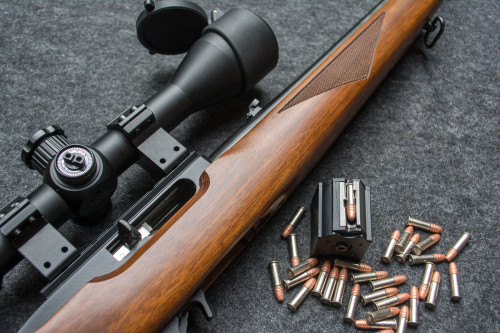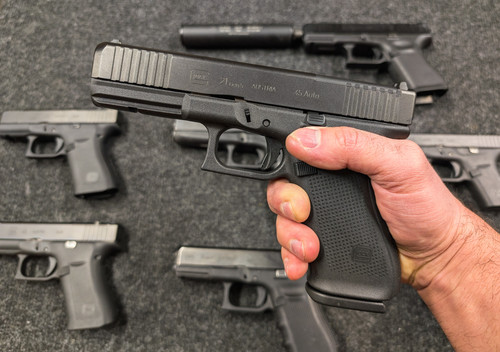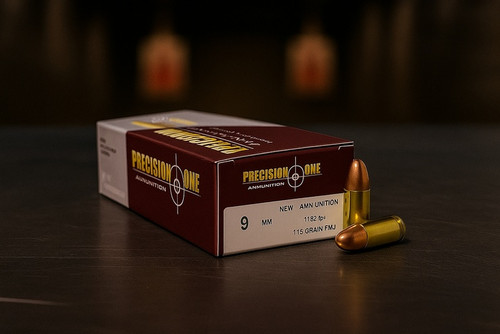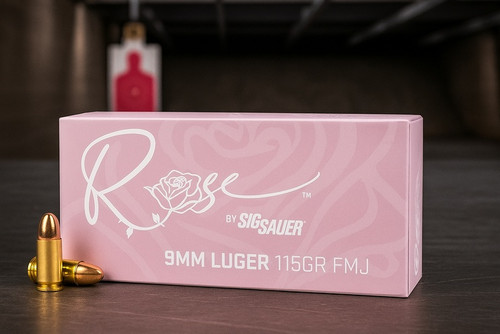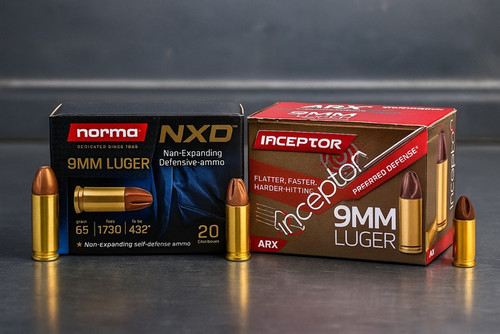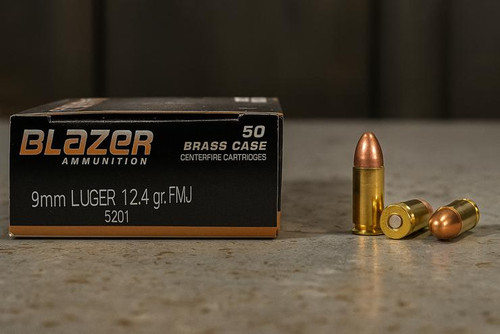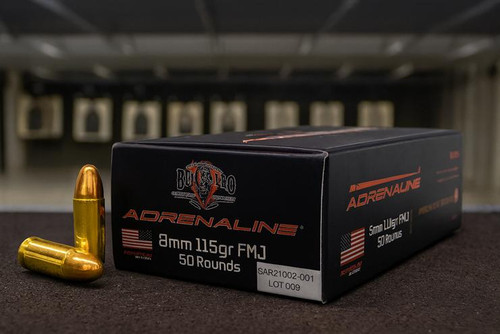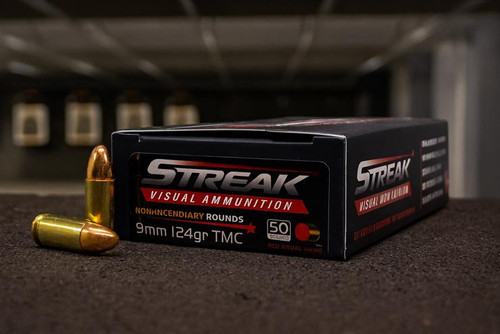The Glock is the go-to handgun for movies, TV shows, and even in real life among police agencies and armed civilians. What’s more, militaries around the world use various models of Glock handguns. If they had existed when John Wayne was alive, he certainly would’ve chosen the Glock over a finicky, boomer-iffic 1911 or some ancient single-action wheelgun.
But why are these blocky, Austrian blasters the default pistol for planet Earth?
In a word: reliability. They flat-out work when others quit. The rugged simplicity of the basic Glock design is the gold standard for reliability, and is constantly flattered through ceaseless imitation in new handguns.
So what ammo should you use with your Glock? It all depends on your shooting goals and which model you have. The most popular Glocks are 9mm models, with .40 S&W and .45 ACP immediately following. Let’s dive into some professional suggestions for the best range and self defense ammo for your specific model of Glock.
Why Are Glocks The Best Carry Gun?
You’ll always hear a few gripes against Glock handguns, but what you’ll never hear is someone say they’re unreliable. Anyone who says that is still watching Blues Clues.
Up until about 2013, Glock’s new handgun releases were less than exciting. Regarding the civilian market, Glock was seen as unconcerned — they knew they made good stuff, and they knew people would buy it anyway. There wasn’t a whole lot of innovation with new products. Over the years, their handguns got smaller and slimmer while still retaining good capacities. At the same time, Glock still lagged behind in cutting the fat from slides and frames. The company made a half-hearted attempt with its “SF” or Short Frame line of guns that reduced grip circumference, but the difference was negligible.
It wasn’t until the release of the subcompact, single-stack .380 Glock 42 and 9mm Glock 43 that we saw Glock’s lineup begin to change for the better. These tiny pocket rockets aren’t designed for police and military, but specifically for citizens who carry a concealed handgun (though they’ll also work as a backup for a our law enforcement officers).
Today, Glock has evolved to cater more and more to the concealed carry crowd, offering several options in almost every slide length, ammo capacity, and thickness you could ask for. Slides and grips have been flattened to make a handful of models easier to carry, capacities have been upped to keep pace with the competition, and guess what — they’re still dead-nuts reliable.
The Best All-Around Glock: The Glock 19
Behold! A Gen 5 Glock 19 MOS with light and Holosun SCS red dot sight. OK, this one has a green dot. But they're officially called “red dot sights.” This gun is somewhat tricked out, but a bone-stock G19 is a proven winner too.
What’s the best all-around concealed carry performer from Glock’s lineup? Let’s give up the goods so you can get over it: the Glock 19 is the best.
Don’t believe us? Here are several reasons why this is true:
Awesome Capacity
Ah, the Goldilocks Glock. Not too big, not too small, and it holds just the right amount of ammo. Glock markets the 19 as a compact, or mid-size, handgun. Its normal capacity is 15 rounds, but in certain states you can only get 10.
The Glock 19 will also accept larger 17-, 28-, and 33-round magazines, but they’ll stick out from the bottom of the grip awkwardly. This is the beauty of magazine commonality. Yes, there are 50-round drums. But man, they’re gimmicks, and they kill all semblance of practicality. A handgun is a personal defense weapon, not a means of suppressing fire.
Perfect Grip
This awesome capacity is the result of the length and girth of the grip/handle, and it gives you a lot of real estate to hang onto (making it easier to shoot than a lot of tiny 9mms). That said, this girth is also one of the knocks against the G19 and many Glocks (save the newer, thinner models). Historically, Glocks have had grips that only the burliest lumberjacks could hang on to, but they were usually a little too much for the ladies and kids. The slides are equally chonky, which means carrying Inside the Waistband (IWB) takes a bit more planning to dress around.
More Accessories
The last reason the Glock 19 is king is that there are more holsters and accessories for Glock pistols than any other brand. This is a result of their immense popularity. Going with a Glock (especially the 19) means you’ll have the widest variety of holster and accessories of any gun, period.
What Ammo Does a Glock 19 Use?
The beloved Glock 19 uses 9mm ammunition, and this is perhaps it’s most important quality.
Without going too deep into it, take our word for it that the 9mm Luger, a.k.a. the 9mm Parabellum and 9x19mm NATO, is the most popular handgun round in human history. The 9mm offers the ideal blend of capacity, low recoil, and terminal performance (i.e. what happens when you shoot a target). Sure, there are more powerful cartridges. But they deliver stouter recoil (.40 S&W, 10mm) or lower capacity (.45 ACP). With today’s modern expanding projectiles and gunpowders designed to give maximum performance from shorter barrels, the 9mm is the runaway winner among handgun rounds.
What's some good ammo to feed your starving Glock? Well, you’re going to want some blasting ammo for regular training and practice. This is where you can save a few bucks, but don’t take a risk with remanufactured or reloaded ammo, unless you’re doing the reloading yourself (and doing it right). Either way, it’s not as safe as getting factory fresh ammo.
Something like the Maxxtech 9mm Luger blends value with quality and is a great all-around training round. Buying in bulk will save you some coin, so consider a 1,000-round case of something like CCI’s 9mm Blazer ammo.
For carry/home defense ammo, you want a quality, expanding hollow point. Don’t just get one box and assume it works (even though a Glock 19 will eat everything — they’re like the AK’s the handgun world). Get at least three boxes and put one through the gun to ensure it works flawlessly, then keep your mags loaded with the others.
Hornady’s 135-grain Critical Duty is a proven performer in a Glock 19 and other guns. If you want a little heavier bullet, check out the 147-grain Browning X-Point.
The Best Full-Size Glock
(Top to Bottom) A Gen 3 Glock 17, with a Gen 5 Glock 19.
It may or may not come as a surprise, but the most recent version of the original Glock, the Gen5 9mm Glock 17, is the best full-size Gock. Its full-length grip, 17-round magazine capacity, and 4.5” barrel make it controllable, capable, and powerful. Its larger dimensions make it a touch harder to conceal, but it’s perfect for open carry or duty work.
Given its size, the G17 is great for home defense or as an outdoor companion on hikes and hunts. You’ll want to stock it with some good defensive ammo when it’s on your hip, but at the range, a good full metal jacket (FMJ) round is ideal.
The Best Subcompact Glock
On the other end of the size spectrum are the subcompacts. These mini blasters are easy to carry and conceal, but they sacrifice capacity and shootability. You can’t have 17 rounds of 9mm in a tiny gun that fits in your pocket. Plus, with a shorter and thinner grip, there isn’t as much handle to grasp.
That said, the compromises are worth it to many folks. The Glock 42/43 and the offshoot 43X are hugely popular. The 42 and the 43 are dimensionally identical, but the 42 fires the .380 Auto cartridge and the 43 is a 9mm. Although the 9mm is the preferred handgun round for everything these days, the .380 is worth considering in a gun this size because it has less recoil than the 9mm. The .380 fires a bullet that is marginally wider than the 9mm. But its case is shorter, giving it less energy and velocity despite still being a capable self defense round.
The 43X is a newer model that addresses the concerns citizens had about the 43 , namely its small grip, lack of an accessory rail for a light, and meager 6-round magazine capacity. The 43X adds a light rail, extends the grip to fit a 10-round mag, and is even optics-ready with the MOS (Modular Optics System) model. If 10 rounds isn’t enough, Shield Arms makes 15-round mags for the 43X, matching the capacity of the G19 in a much smaller package.
With short barrels and small grips, you’ll want to stay away from high-powered +P loads in the 43 and 43X. Stick to a proven winner like Aguila FMJ for range ammo and a quality jacketed hollow point (JHP) for carry use.
For the .380 ACP G42, Norma makes an awesome 95-grain FMJ load. You can use a hollow point for carry and self defense, but velocity is what initiates hollow point expansion and the .380 ain’t exactly a speed demon. Some folks carry FMJ for self-defense, relying on its superior penetration for terminal effects.
What Are the Biggest Glocks?
Sometimes size really does matter — a fact that isn’t lost on the folks at Glock. There are a few large models in their lineup that are perfect for competition, hunting, or just having some fun with a big gun at the range.
Glock 17L
The Glock 17L is a long-slide version of the original. It adds an inch and a half of barrel to give those 9mm pills more velocity and a greater sight radius (the distance between the front and rear sights). The longer the sight radius, the more precise you can be with your aiming. In other words, the closer you can get that rear sight to the target, the more accurate you’ll be. Going from a 4.5” to a 6” barrel might not seem like much, but it makes a substantial difference.
Glock 24/34
Another lengthy option is the Glock 24, which is like the 17L but chambered in .40 Smith & Wesson. The Glock 34 is another long-slide 9mm, and has few tweaks to the trigger to make it competition-ready. The best ammo for these long-slide lead slingers depends on what you’re going to use it for. For competition shooting, try the Remington Range 9mm Luger 115 Grain FMJ. For home defense, you might use the Hornady American Gunner 9mm Luger +P 124 Grain XTP Jacketed Hollow Point.
Glock 40
The biggest hammer in the Glock stable is the mighty Glock 40. This beast sports a 6.02” barrel and is chambered in 10mm Auto. The 10mm is a whopper (more on that later), and the long barrel not only helps cut back on recoil but also makes the round more potent. A longer barrel means more velocity, and as we know, velocity = ass-whuppin’.
The G40 is a legitimate hunting pistol, especially when it’s in the MOS form with a red dot sight. With that in mind, the best 10mm ammo for a Glock is an FMJ round for target shooting or a full-power hollow point for hunting and self defense.
What Ammo Does My Glock Use?
If you haven’t figured it out by now, the Glock model number does not correspond to the caliber the gun fires or its magazine capacity. Otherwise there’d be a dozen “Glock 9” handguns. Saying you have a “Glock 40” can mean you have one chambered in a .40 S&W or that you have the model 40. Basically, just don’t be a tool and say you’ve got a “Glock 40” without any further clarification.
In any case, you’ve got a new Glock, and you need something to feed it. Let’s dive in and take a look at the most popular models (by caliber) and get you squared away with some new freedom seeds.
If you just need a quick answer, here’s a chart of different calibers and what Glock models can use them:
| SUBCOMPACT | SMALL FRAME | MEDIUM FRAME | LARGE FRAME | |
|---|---|---|---|---|
| 9MM | 43 | 26 | 19 | 17 |
| .40 | - | 27 | 23 | 22 |
| .22 | - | - | 44 | - |
| .380 | 42 | - | - | - |
| .45 | - | 30 | - | 21 |
| 10MM | - | 29 | - | 20 |
| .357 | - | 33 | 32 | 31 |
| .45 GAP | - | 39 | 38 | 37 |
Read on for a more detailed explanation of the advantages and disadvantages behind each round and model.
9mm Glock Pistols and Ammo
The 9mm Luger is the most prolific and popular handgun cartridge around the globe. And since we’ve already established that Glocks are extremely popular, it stands to reason that you’re probably here today looking for the best ammo for your 9mm Glock.
The most popular 9mm Glock models are the 19 and 17, and we won't rehash them or the 43 and 43X. However, the 26 also deserves a strong honorable mention, seeing that it’s the original micro 9mm Glock. If the 19 is a miniaturized 17, the 26 is a miniaturized 19. The 26 will accept the magazines of larger pistols if you feel the need, but they’ll stick out like 10 pounds in a 5-pound sack.
Range ammo for a 9mm is easy to come by, but it is most definitely not all created equal. To avoid becoming a meme for bad decisions, stay away from remanufactured ammo. Is saving 2 or 3 pennies per round worth gambling with your safety?
If you want to save a few bucks, play it smart and go for something like ZSR 9mm (in bulk). Shooting through a case will get you super familiar with your gun and boost your confidence.
For self or home defense, stick with a proven expanding bullet. We say expanding rather than hollow point because bullets like Hornady’s Critical Duty are used by scores of law enforcement agencies around the country. They feed well and deliver excellent terminal performance when everything is on the line.
.40 Smith & Wesson Glock Pistols and Ammo
To spare you the rehashed history of the round, the .40 S&W was designed to add more oomph to cops’ holsters. It’s the result of chopping a few millimeters of case length from the 10mm Auto to address the issue of the monstrous recoil the 10mm carries. Back in the 1980’s and 90’s, many cops were carrying .38 Special wheelguns and 9mm autos. However, some high-profile shootouts where perps wore body armor led to widespread adoption of the 10mm and subsequently the .40 S&W. Today, lots of agencies are going back to the 9mm but there are still plenty of .40s in the field.
The .40 is also a good choice for self defense and concealed carry if you can deal with the snappy recoil. Most bullets are 165 or 180 grains and zip along at respectable velocity, which equals greater recoil.
The .40-caliber Glocks are (from full size to compact) the 22, 23, and 27. Glock had proven winners in their full size guns, so they simply chopped off the grip and shortened the barrel to create small, more concealable guns. In a full-size configuration, the .40 is a great choice for added firepower. However, in the subcompact 27, it’s a bit of a firecracker.
This is a versatile trio of handguns, and they thrive on easy plinking loads up to full-power stoppers like the Federal Personal Defense Hydra-Shok round.
.22LR Glock Pistol and Ammo
This is a new one for Glock, and one that’s long overdue — but did they screw it up?
The .22 Long Rifle (LR) Glock 44 is the only rimfire Glock makes. While it sounds great on paper, it also has some tricky aspects:
- Capacity: The Glock 44 only holds 10 rounds in its magazine. Ten rounds used to be the standard for .22 pistols, but today there are .22 pistols that hold 16 (Taurus TX22) and even 20 rounds (Sig P322) in the magazine.
- Reliability: Glock says that the 44 won’t function all that well without high-velocity rounds, and this is true. Constant jams are annoying when you’re trying to plink.
- Suppressor specs: A lot of plinkers use a suppressor on their .22, and you have to buy a threaded barrel for the Glock 44 to use one. The Taurus automatically comes with a threaded barrel.
- Cost: The 44 is expensive compared to similar offerings on the market. Finally, the 44 looks and functions just like a Glock with a plastic slide. That may or may not bother you, but it gives some users a cheap, BB gun-like feel.
As far as ammo goes, you’re going to want some quality, high-velocity (not “standard velocity”) rounds like CCI Stingers. While Stingers are awesome and definitely high velocity, they’re expensive (which kinda sucks the fun out of blasting away with a rimfire).
.380 Auto Glock Pistols and Ammo
Glock used to make a handful of .380 pistols. But nowadays they just make the model 42, which is the tiny six-shot subcompact. It’s a fantastic option for concealed carry because it’s been slimmed down to .83” inch in width from 1”. This 17% reduction may not sound like much, but it absolutely is, especially when you’re shoving things inside your pants for Inside the Waist (IWB) or Appendix Inside the Waist (AIWB) carry.
Some folks rely on expanding ammo in a .380, but this little round is usually fired from short barrels and doesn’t always see the velocity needed to make hollow points expand reliably. A lot of folks use regular FMJ ammo as a defensive load, relying on the force of penetration to make the bad guy stop doing whatever he’s doing.
.45 ACP Glock Pistols and Ammo
The .45 ACP, or Automatic Colt Pistol, is a lot of things to a lot of people. It’s the Boomer’s delight, ridiculed by 9mm lovers, and unquestionably an all-American creation. The fact that Glock offers guns in .45 is a testament to its heritage and popularity. It’s claim to fame is putting big holes in bad guys.
The .45 certainly has the ballistics and terminal performance to stop a threat. This fact isn’t disputed. However, the .45 still lags in capacity. The full-size Glock 21 holds 13 rounds compared to the 17 rounds held by the full-size 9mm Glock 17. Here, you’re giving up four rounds but get more juice per bullet.
If you want to carry a .45 Glock, it won’t be the only chubby in your pants. Glock offers the 10-round Glock 30 (1.12” width) and the slightly slimmer Glock 36 that measures 1” across but holds a paltry six bullets. Those fat bullets translate to a fatter grip.
That said, if you wanna sling some equally heavy bullets, check out some classic 230-grain ball ammo. Your dad will be proud of you. For defensive purposes, there’s no shortage of .45 hollow points, either.
10mm Auto Glock Pistols and Ammo
Ah, yes, the caliber of the gods.
On the Internet, you’ll often hear the trope “10mm is the best millimeter” (among 10mm Auto fans anyway) — and it’s true in a lot of cases. If you want the end-all be-all in reasonable autoloading cartridges, the 10mm is king of the hill. We say “reasonable” because there are other more powerful, wacky novelty cartridges out there (such as the .50 AE). However, in the world of mainstream cartridges, the 10mm reigns supreme.
Glock’s 10mm lineup consists of the full-size 20 and the subcompact 29. Why no midsize/compact 19? We’re still waiting patiently on Glock to make one.
At any rate, shooting the 10mm is an experience. Recoil can range from hot .40 S&W to crap-your-pants biblical. When firing the subcompact model 29, you’d better be choking that grip like it owes you money before the firing pin drops. You can actually shoot .40 in a 10mm pistol, but not the other way around, since the .40 is just a shortened 10mm. The projectiles are the same, but the shooting experience is decidedly different.
In any case, the 10mm is a legitimate hunting cartridge, capable of whacking deer and the like. It’s also a popular sidearm in bear country when loaded with super spicy 200-grain loads. It’s definitely capable of taking down two-legged critters as well.
If personal protection is your goal, the best 10mm ammo is a scorchin’ hollow point like the PMC Bronze 10mm Auto. For everything else, look at a TMC (Total Metal Case in .40/10mm speak) round like the Signature 10mm Auto Ammo 180 Grain TMC from Ammo inc. It’s like an FMJ, but with the flat nose that’s common among .40/10mm rounds.
.357 Sig Glock Pistols and Ammo
The .357 Sig is a very loud answer to a question no one asked. It’s definitely cool that it’s super spicy, but it’s also super expensive and blasty. It was Sig Sauer’s attempt to make a round that delivers .357 Magnum-levels of power from an autoloading cartridge. It sounds cool, and it makes a lot of energy, but because physics is a thing, you pay a steep penalty in blast and recoil to get that performance.
Glock makes a trio of .357 Sig pistols. From largest to smallest, there’s the 31, 32, and 33. The size template is much like the 9mm or the .40 set; start with the biggest and make the grip and barrel shorter to yield smaller versions.
There’s a cult following for the .357 Sig, like 10mm and other gluttons for power — but is it really all it’s cracked up to be? Sig took a .40 S&W case and necked it down (shrunk the open end where the bullet goes) to a .357” diameter. This retains almost all the case capacity for gunpowder, but the same charge is propelling a lighter bullet, resulting in greater velocity.
Its obvious comparison is the .40 S&W. For those with both who can be objective about the two, the .40 is the winner. The energy levels are almost identical, but the .357 is a bit “blastier,” harsher, and more expensive. However, the good news is that a simple change of the barrel lets you shoot both from the same gun and magazines (remember, they both use the same case).
.45 GAP Glock Pistols and Ammo
If the SIG is the answer to a question no one asked, the .45 GAP (Glock Automatic Pistol) is the punchline to every joke about bad, weird, and awful cartridges.
We get where Glock was coming from with the development of the GAP, but you simply can’t concoct a greater set of compromises that led to this absolute turd of a cartridge. Glock wanted to capture a little of America’s love of all things big and went with a .45-caliber bullet. They also wanted the reduced recoil of the .45 (which isn’t horrible outside non-+P rounds), so they lopped off a few millimeters from the .45 ACP.
That’s it. That’s the extent of the innovation.
The trouble is, by the time the GAP was brought to market (to much chuckling and mockery), 9mm was just beginning its comeback as the go-to for just about everything. Bullets for the 9mm were improving, delivering greater lethality and terminal performance, and new guns were being introduced (mostly in 9mm and .40). The GAP was left waiting at the station for a train that was never coming in the first place.
The bottom line with this silly cartridge is that it never really had a chance. No matter what marketing fluff you read, it ain’t worth it. You’re welcome.
Final Thoughts
Glock pistols are awesome in their simplistic reliability, and there’s a reason they’re the most popular handguns in the world. Keep yours topped off with quality ammunition and it’ll deliver years of reliable service for whatever you need.
If you're a Glock owner looking for reliable ammo, look no further than Pro Armory. As a veteran-operated company, we're passionate about providing fellow firearms enthusiasts with top-quality ammunition.
Whether you're plinking at the range, shooting for competition, or prepping your Glock for self-defense, Pro Armory has the ammo you need to get the job done right. With our knowledgeable staff and commitment to secure transactions, you can trust that you're getting the best possible products and service when you shop with us. Plus, we offer the lowest shipping price possible to ensure that you get your ammo shipped straight to you at an affordable price. Browse our selection of handgun ammo today and start shooting!



